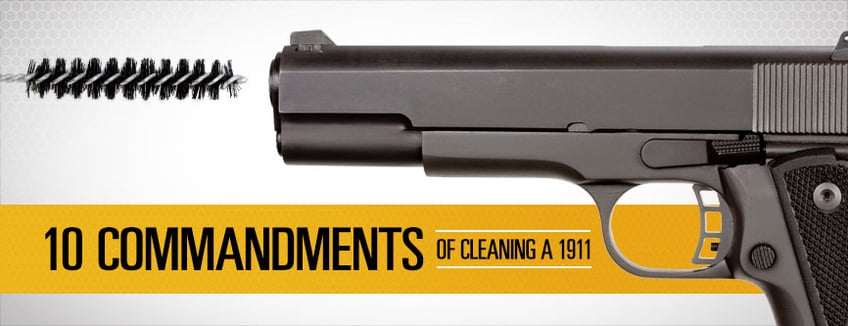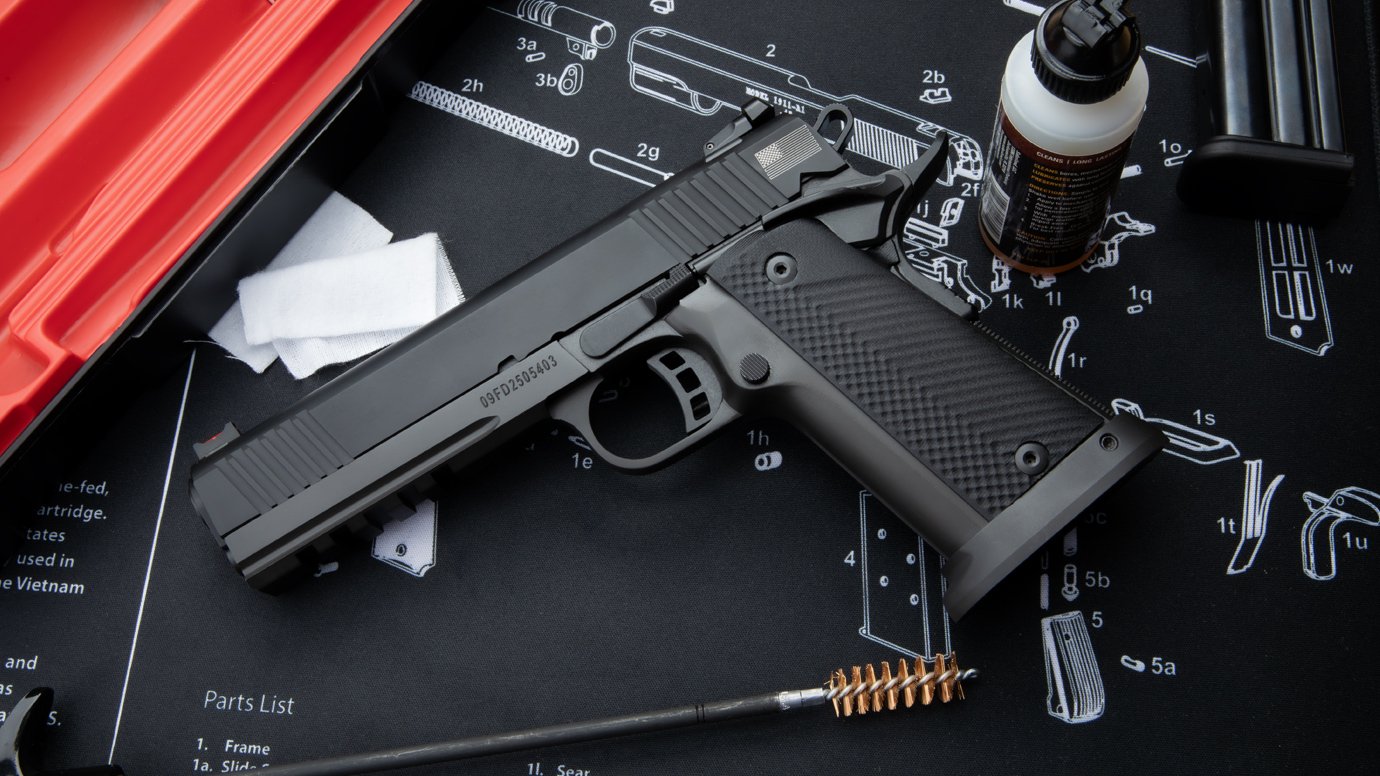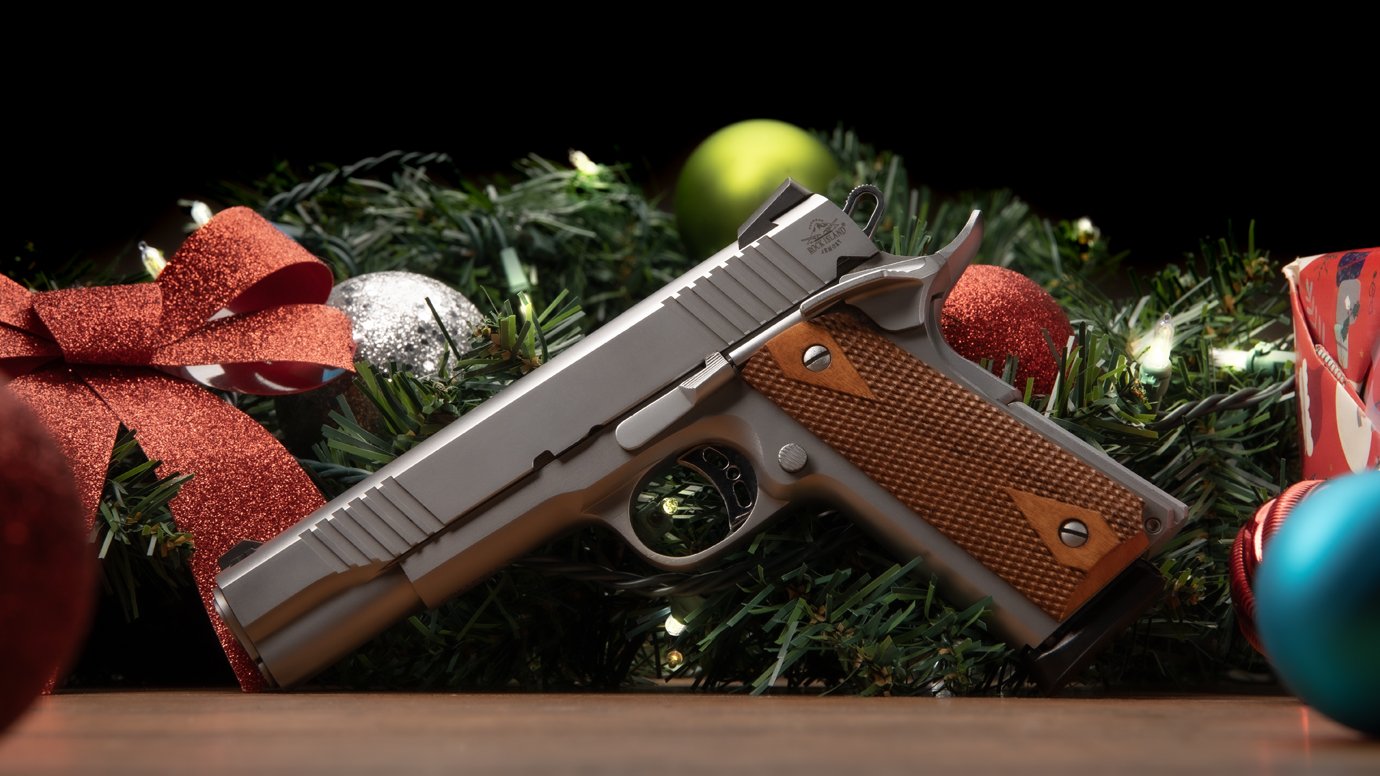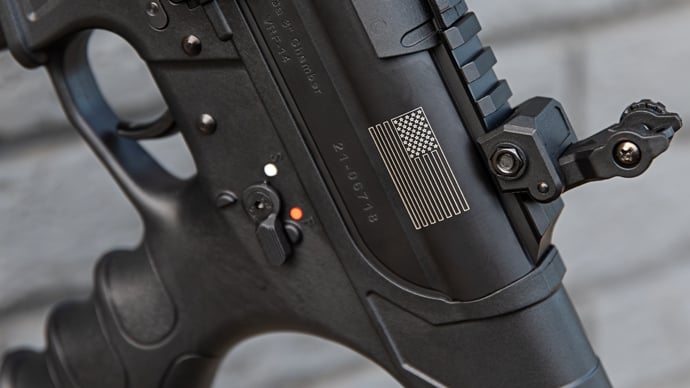The 10 Commandments of Cleaning a 1911
Posted by Team Armscor on Feb 29, 2016 5 Minute Read

There's a certain art to keeping a 1911 in tip-top shape. It's not as simple as taking it apart and wiping it down. That is, there's more to it if you want to make your pistol last for decades to come. Here are 10 rules to live by when it comes to maintaining the prowess of your go-to 1911.
1. Unload It
Remove the magazine, and rack the slide, using the slide stop to hold it open while you verify that the chamber is empty. Always remove the magazine first, as a full magazine will fill an empty chamber. Do not assume that it has been cleared. Remove the magazine, and check the chamber.
2. (Actually) Read the Manual
Every new 1911 is shipped with a manual, or at least a CD or note card with a web address to find the manual. And you need to read it, even if you know the USGI M1911A1 manual and can recite it from memory. As new technology in materials, design changes or machining develops, changes can occur. Reading the manual takes as much time as drinking a cup of coffee and can prevent a lot of easily prevented mistakes.
3. Recoil the Spring Plug First
It does not matter what your father, grandfather, drill sergeant, armorer or even that old guy at the gun store told you - always remove the recoil spring plug first. This releases all tension in the parts of the gun you will be cleaning during a standard field strip. With the slide in place, there is only one direction the spring plug can go, and that is controlled by your hand. It is the first item out and the last item back in. (Unless you have a 1911 with a bull barrel and reverse plug, in which case, repeat Commandment No. 2, because there are different kinds.)
4. Brush from the Breech
The business end of the barrel is finished a certain way. Even on the cheapest of 1911s, there is a crown on the barrel that manages the release of gas pressure behind the bullet as it exits the barrel. A metal rod or boresnake guide can damage the fine edges of the crown causing uneven wear. Over time, this can cause your fine, accurate weapon to be inaccurate or even erratic. By brushing from the breech, you prevent this issue entirely.
5. There is No “Best”
Cleaning products are pretty universal. Gun-makers suggest specific products based on one of two things - either they have marketing agreements with companies, or they use the product in their own shops. If you must switch between products, perform a detail strip, clean and re-lube with the new products. While most products are fairly inert or even compatible, some are not. No need to risk it if you don’t have to. No need to order something special if something usable is on hand. There is no excuse for waiting until you can order your favorite, specially scented, high-speed/low-drag blend of vegetable oils.
6. Use Proper Ventilation
There is no better known scent in the world of gun cleaning than Hoppe’s #9. That strangely tantalizing mix of burnt banana and sardine just smells right. They even make air fresheners that smell like it. However, most solvents and cleaners that have any form of petrochemical base can cause severe brain damage if used improperly. Even with today’s more earth-friendly, non-toxic cleaning agents, use ventilation. GSR (Gun Shot Residue) contains unburnt powder, atomized heavy metals and all sorts of toxic chemicals from the bullet components. Your gun may smell minty-fresh, but don’t take silly chances.
7. Use Oil
Not grease. Not WD-40. Oil. And thou shalt use it sparingly. Grease can solidify and gum up due to temperature changes and foreign matter becoming trapped within. What is slippery to your skin is sticky to dust, sand, dirt and unburnt powder. Penetrating oils like WD-40 are wonderful for their intended purposes but can penetrate your ammunition and cause misfires or duds.
8. Properly Lube
Under-lubricating a weapon causes friction where we do not want it. This leads to premature wear and damage to the gun. Over-lubrication can cause the same issues as using grease or penetrating oil, gumming things up, collecting debris or contaminating the ammo.
9. Wipe it Down
When you have finished cleaning, lubing and re-assembling your 1911, wipe it down with an oily rag or a silicone-impregnated cloth. The chemistry of the human body is not known to be gentle on firearm finishes and can penetrate Parkerizing and ruin bluing. The final wipe will leave a light coating of oil, or a fresh application of silicone, on the surface of the weapon, helping to prevent damage to the finish.
10. Don’t Clean Too Often
Guns are machines. The 1911 was designed to function in a wide variety of terrain and climate and only cleaned when absolutely needed. A properly maintained 1911 can be fired with black powder loads if needed. Even high-cost weapons with extremely exacting tolerances do not need to be cleaned very often. Over-cleaning can cause those internal dimensions to change by thousandths of an inch, reducing accuracy and possibly even functioning life of the firearm. Refer to the manual, and keep a regular maintenance schedule.
Remember
So when it comes to your 1911s, take good care of them. Taking these careful considerations now and abiding by the commandments of cleaning will pay off in spades for years to come.
Treat your 1911 well, and it will return the favor.







